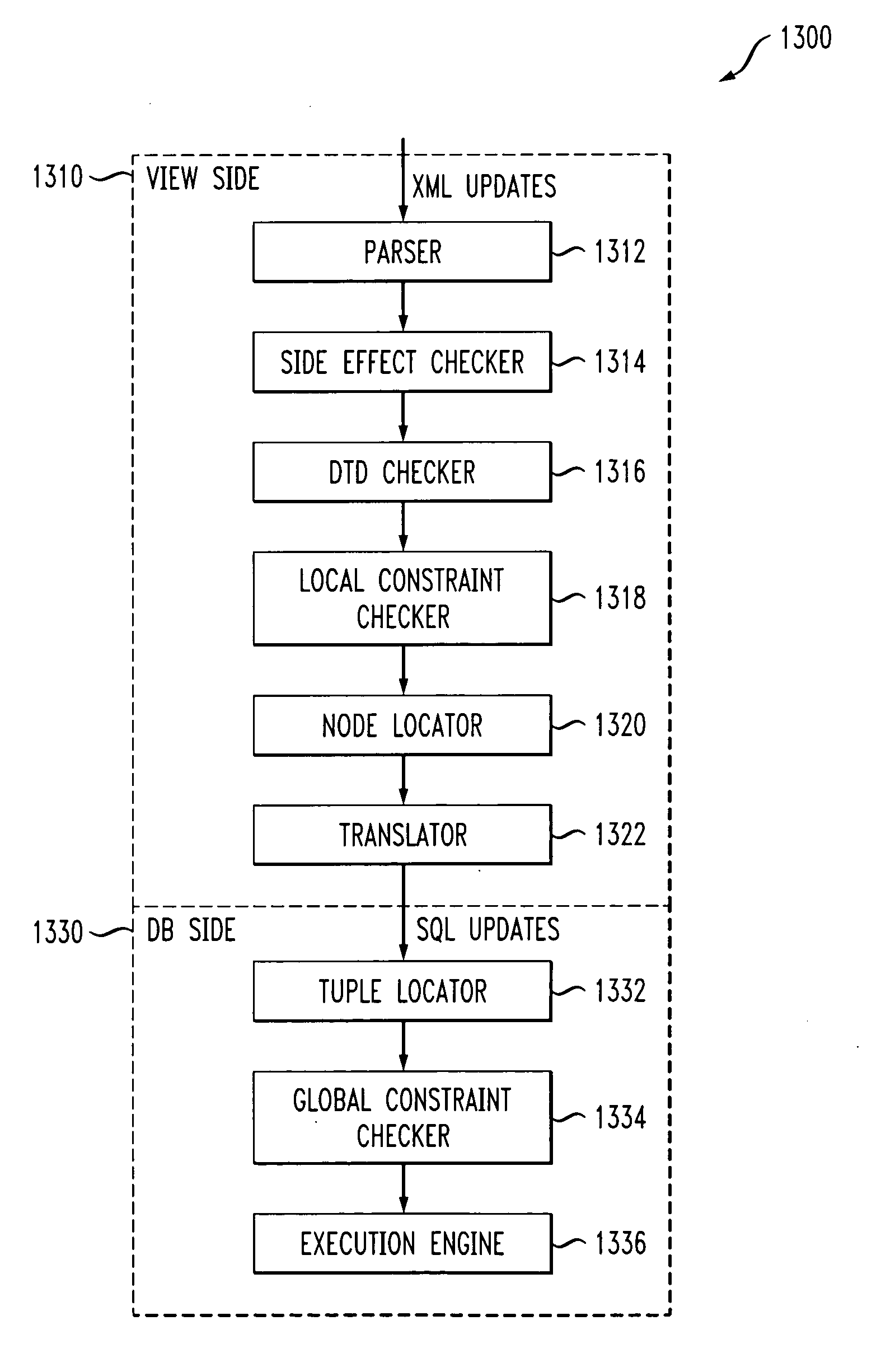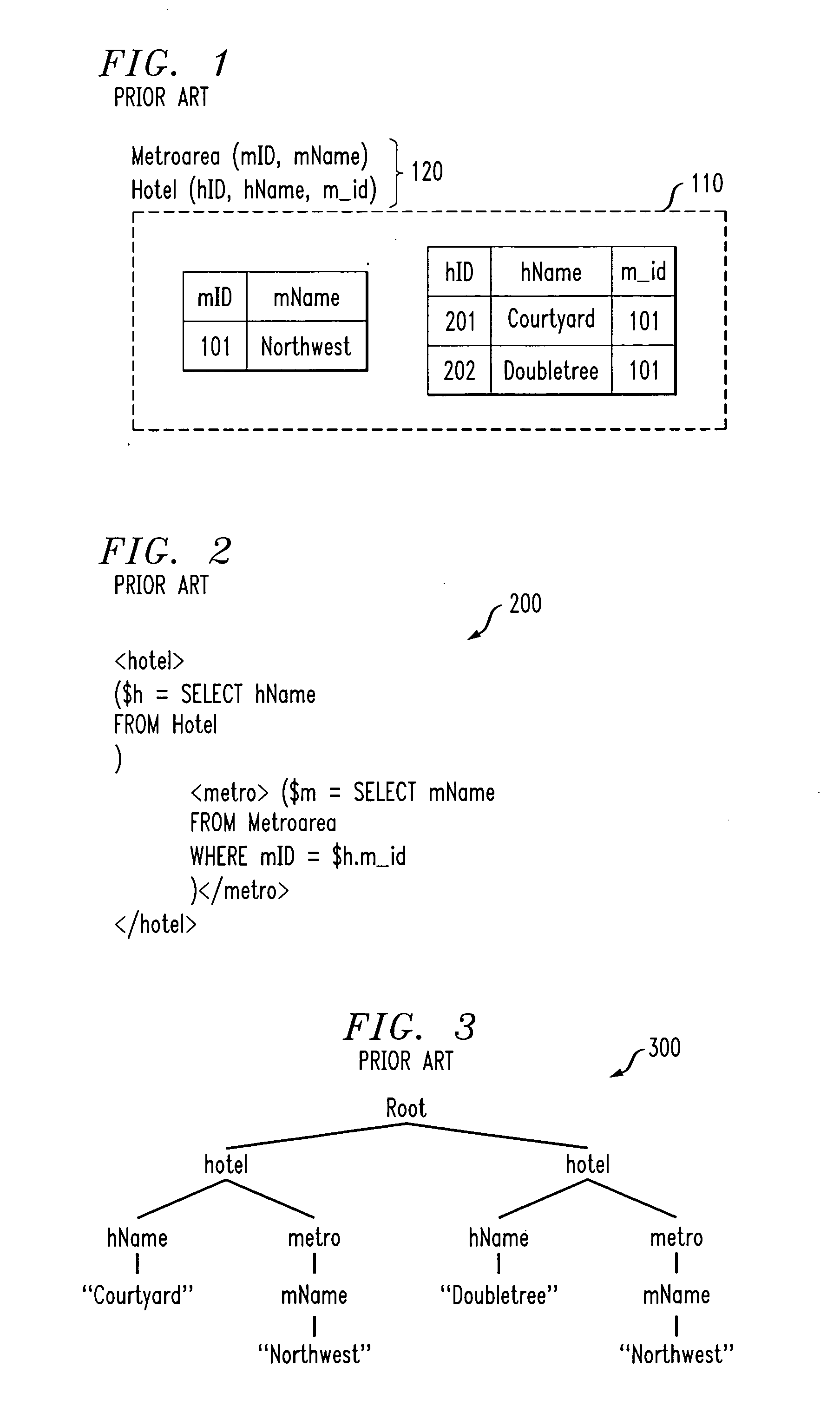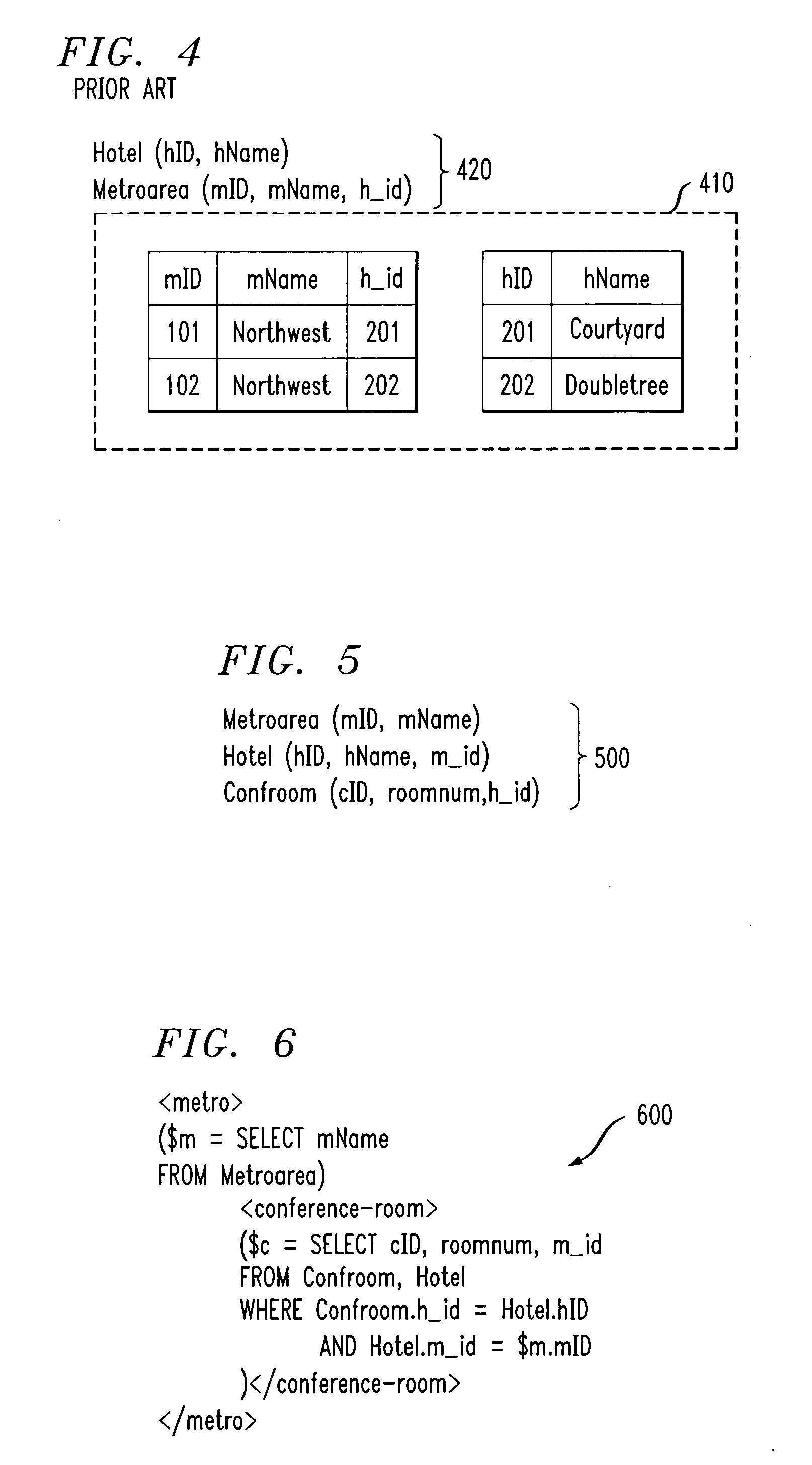Method and apparatus for updating XML views of relational data
a technology of relational data and publishing views, applied in the field of mapping between, can solve problems such as unsupported update operations
- Summary
- Abstract
- Description
- Claims
- Application Information
AI Technical Summary
Benefits of technology
Problems solved by technology
Method used
Image
Examples
example 1
[0028]FIG. 1 illustrates a conventional relational database 110 and its schema 120. Given the relational database 110 and its schema 120, and the view definition 200 (updating the underlying relational database in the context of XML shredding using the inlining method), shown in FIG. 2, the resulting XML document fragment 300 is shown in FIG. 3. Using the inlining algorithm described by J. Shanmugasundaram et al., a different set of base tables 410 with a different relational schema 420 would be generated from the view 200, as demonstrated in FIG. 4. In the latter schema 420, the Metroarea relation, rather than the Hotel relation, has a foreign key. Instead of having a single tuple for each metro area, there is a separate Metroarea tuple for each hotel. When a hotel node in the document is deleted, it is easy to see that all the tuples related to its children nodes, more specifically, the related Metroarea tuples must be deleted. However, in the original database 110 of FIG. 1, the ...
example 2
[0029]FIG. 5 shows a relational schema 500, and FIG. 6 shows a view definition 600. The original relational schema 600 is made up of three relations, while the inlining-generated schema 700, based on the XML view, shown in FIG. 7, consists of only two relations. Given the latter schema 700, the deletion of a metro node can be executed in a straight-forward manner by propagating the deletion to the Confroom table. If the same thing was done under the original relational schema 500, the Hotel table is affected due to the foreign-key constraint. As the Hotel table is invisible to the XML application, any operation on it is considered undesirable.
[0030] The above examples show that updates through XML views are more challenging to manage when the underlying relational database schema is not the one derived from the view via inlining. The challenge arises from the fact that the XML view does not determine a unique relational database schema, and so, assumptions about the specific nature...
example 3
[0053]FIG. 8 shows the underlying database schema 800. FIG. 9 defines the XML view 900. From the foreign-key constraints of the underlying database (not shown), the relationship of view nodes metro:hotel are determined to be one-to-many (1:n), hotel:state are determined to be many-to-one (n:1), hotel:conference-room are determined to be 1:n, hotel:guest-room are determined to be 1:n, guest-room:availability are determined to be 1:n, hotel:nearby-restaurant are determined to be many-to-many (m:n), and hotel:phone-number are determined to be one-to-one (1:1). (1:1 comes from the fact that phID acts both as the key and the foreign key of Phone; as a foreign key, it references to hID in the Hotel relation.)
Update Translation Algorithms
[0054] Overview
[0055] As any XML update is based on a subtree instead of a single node, the particular update may affect many nodes in the subtree besides the indicated node itself. As a result, during translation, while considering the updates against ...
PUM
 Login to View More
Login to View More Abstract
Description
Claims
Application Information
 Login to View More
Login to View More - R&D
- Intellectual Property
- Life Sciences
- Materials
- Tech Scout
- Unparalleled Data Quality
- Higher Quality Content
- 60% Fewer Hallucinations
Browse by: Latest US Patents, China's latest patents, Technical Efficacy Thesaurus, Application Domain, Technology Topic, Popular Technical Reports.
© 2025 PatSnap. All rights reserved.Legal|Privacy policy|Modern Slavery Act Transparency Statement|Sitemap|About US| Contact US: help@patsnap.com



